View a full page version here. Photos by Peter Larson unless otherwise noted.
40 People Who Help Make Cleveland the Best Damn Place in America
By Scene Staff on Thu, Jul 23, 2015 at 2:07 pm
Tags:
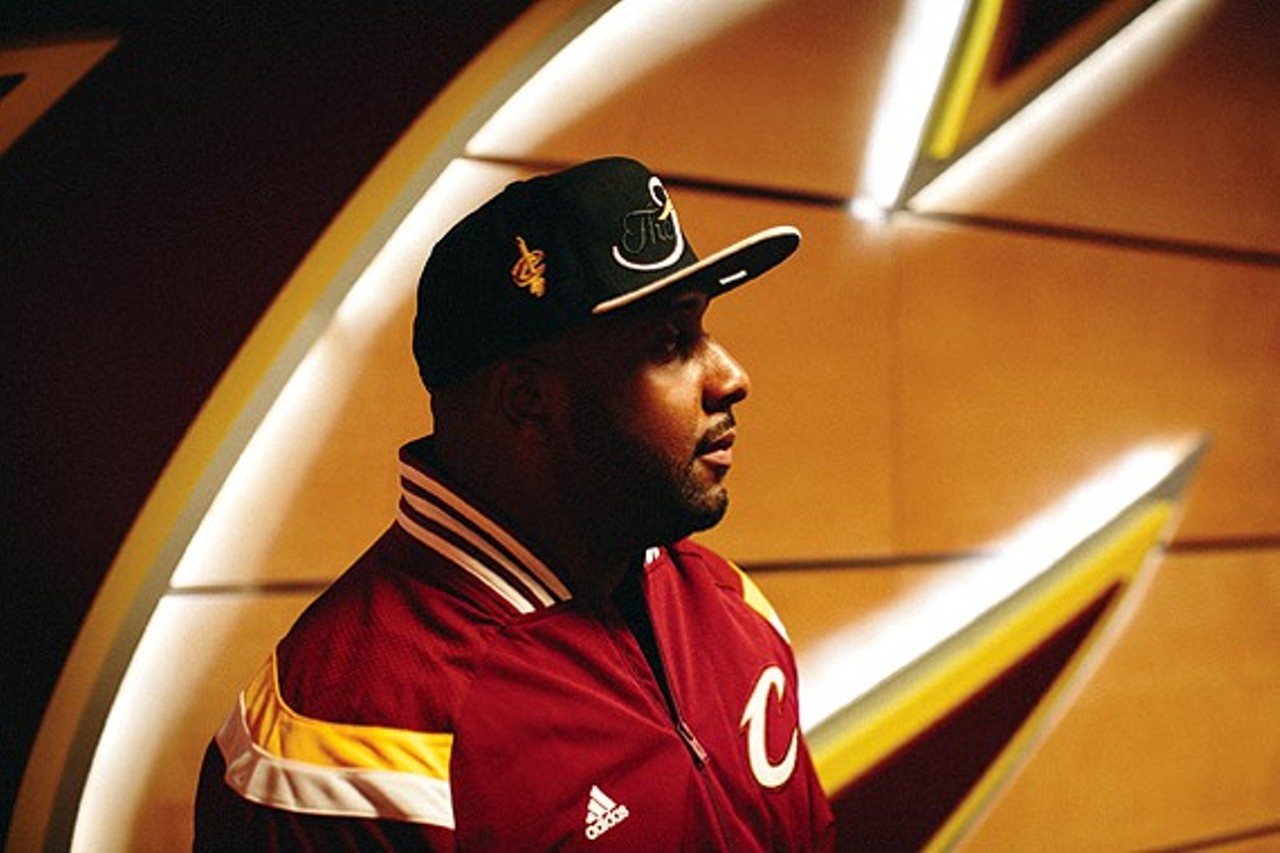
PA Announcer, Cavs; Radio Host, 93.1 FM; Beer Money Host, SportsTime Ohio
Back when Ahmaad Crump was growing up, his friends knew that even if they were out in the neighborhood and playing on a Saturday morning, Crump wouldn't be joining them until noon. That's because The Price is Right didn't end until then, and Crump was a gameshow junkie. "I loved them all," says Crump. "But my friends knew not to knock on my door until it was over." He knew then that he wanted to have a mic in his hand for the rest of his life, and things have turned out that way in more ways than he could have imagined. Not only did he finally get a chance to host his own gameshow — Beer Money on STO — but a good portion of his year is spent, mic in hand, entertaining more than 20,000 Cavs fans at Quicken Loans Arena. "I probably would have been hustling regardless of that opportunity," says Crump of the Cavs gig, "but never did I imagine being front of that many fans each night." Crump was working as a records clerk at Ulmer & Berne, a big downtown law firm at the time, back in the mid-2000s. He wanted to be a lawyer after graduating from Central State University. But his dreams changed course, leading him back to the mic. He was on the Cavs' scream team in 2003 and 2004. When Dan Gilbert bought the Cavs, he wanted to start over with a fresh crew — new dance crew, new excitement, new everything. "I saw an article on Cavs.com that said they were looking for PA announcers so I tried out," says Crump. "And I bombed the audition. There were three judges, and there was a simulated game, and they gave you a script but you had to memorize it as best as possible. I wasn't used to that." One night in 2005 when current in-game partner Nicole Cuglewski called in sick, the Cavs called Crump to fill in, and after a few jittery moments, he nailed it. And he finally got his shot at the PA gig for the 2006-2007 season — a perch he hasn't relinquished since. From the start, one of the employees suggested dropping a mic from the ceiling, a la boxing matches. It's become part of Crump's routine as he blares out, "Annnnnnd from St. Vincent St. Mary ..." Each player gets Crump's little touch — Mo Williams, returning next season, was one of the few players with a specific request, asking Crump to introduce him as MoGotti — and there's a certain specialness in announcing No. 23, but Crump is equal opportunity with the flare. "When LeBron announced he was coming back last summer, I think the next day I started practicing for that first game at the Q," says Crump, who's been married for three years and recently welcomed a daughter to the family. "But at the end of the day, as great a player as he is, it's all about the team." Crump, incidentally, hasn't missed a single game, and his streak — currently at 445 straight games — is almost at another Cleveland milestone: the Tribe's sellout streak.
By: Vince Grzegorek
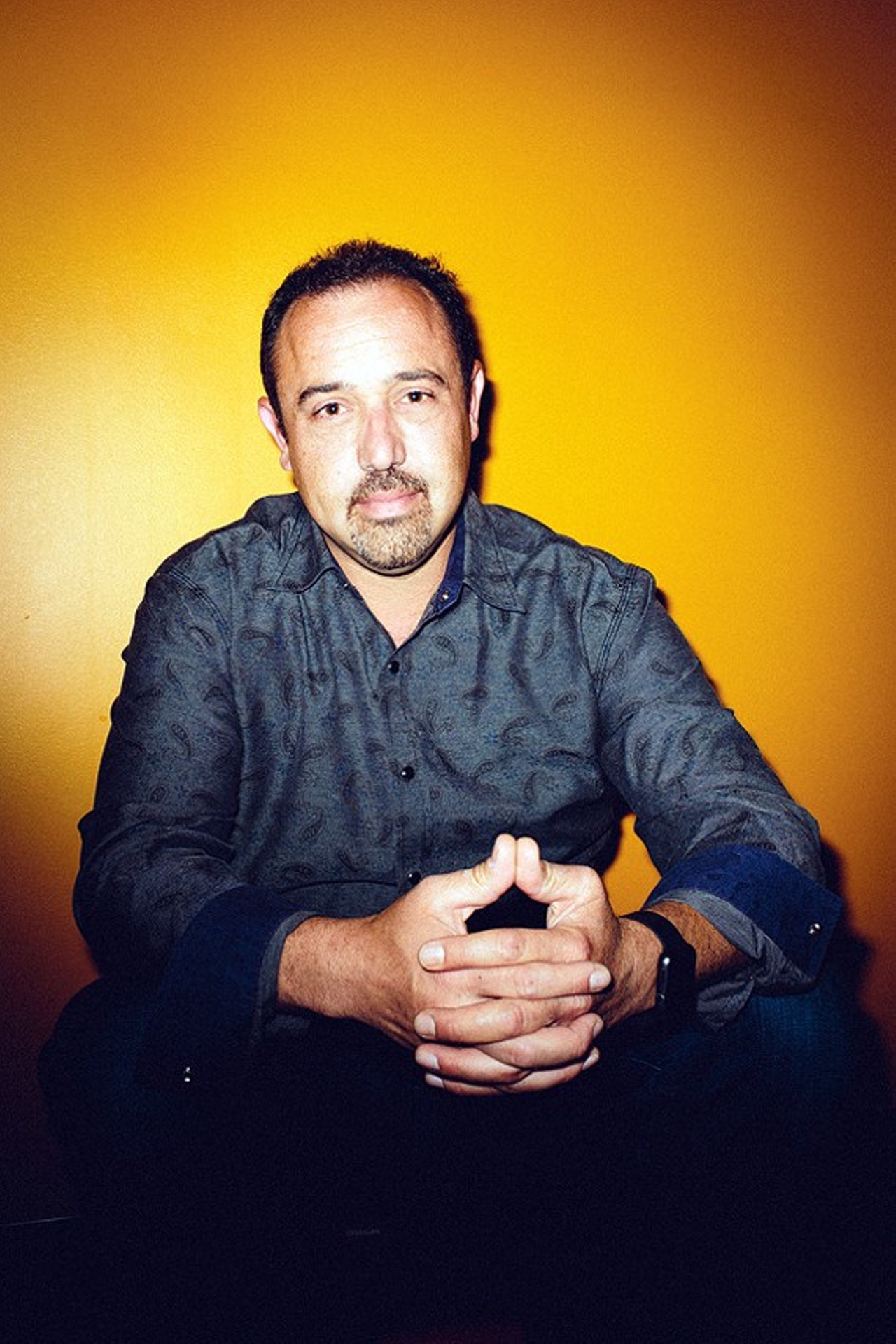
Founder, Think Media Studios
At the Mayfield home of Think Media Studios, Brian Glazen's employees are quick to crystallize their founder's reputation: "Around here, he's known as the guy who can pull off the impossible," says marketing & sales VP Mary Hipp. "If something can't be done, Brian can do it." Sitting across from a world map with pushpins identifying site locations for T.M.S. projects, Glazen admits that the impossible is what has always excited him. It's what keeps him coming to work every morning. "I like to fix things," Glazen says. "If you tell me something can't be done, that's exactly what I'm gonna go do. And that's really the core of what a producer is." Working at a media studio, producing often means liaising with powerful people, working nimbly on one's toes among competing entities. Sometimes it means telling Shaquille O'Neal that he's going to have to dump a 5-gallon bucket of water over his head one more time. "Shaq looked at us and said, 'You get one pour,'" Glazen says as he chuckles, recalling shooting the first Cavs intro video that Think Media produced back in '09. It was the scene where Shaq emerges from Lake Erie to join his XL teammates. "We did the one pour and it didn't work. He started choking on the water ... he said we could have one more pour." Glazen, born and raised in Cleveland, fled the Lake Erie shores in his early 20s to seek fame and fortune in Hollywood, which he promptly found. Due to tenacious networking, Glazen managed to work with industry luminaries on projects for HBO, Showtime, Fox ... no biggie. But Cleveland's siren call was too seductive, and when it came time to start a family, Glazen knew where he belonged. "I always knew I would come back," he says. "This place is home." Though he worked for a spell at his father Alan's company, Glazen Creative, Brian soon wanted total creative control and set out to form Think Media Studios. "The market for what we do has been more open-armed than I expected," Glazen says. What they do is incredibly high-quality productions: Every time you see the Cavs' intro videos, or sleek corporate promos for CSU, Playhouse Square, Progressive or Smuckers, chances are it's a T.M.S production. The corporate projects have been the company's bread and butter, and that makes sense, because Glazen's personality is hardwired for meaningful, client-first relationships. But Glazen says he's "aggressively expanding." The next horizon is original content. Last year, their second-ever feature film Fishing Without Nets took home Best Director honors at Sundance. They've received offers for two features in the next year, and they're pursuing documentary content as well. "I see a lot more of that, but no less than the other," Glazen says, championing his staff's commitment to quality production from concept to the studio to the editing bays regardless of the project. As for Cleveland, he knows what it'll take to keep the positive filmmaking momentum going. "We need to continue being an incredible place to shoot, with good, reliable crews; accessible, state-of-the-art gear; and people who are eager to have productions here. We've got most of those covered already."
By: Sam Allard
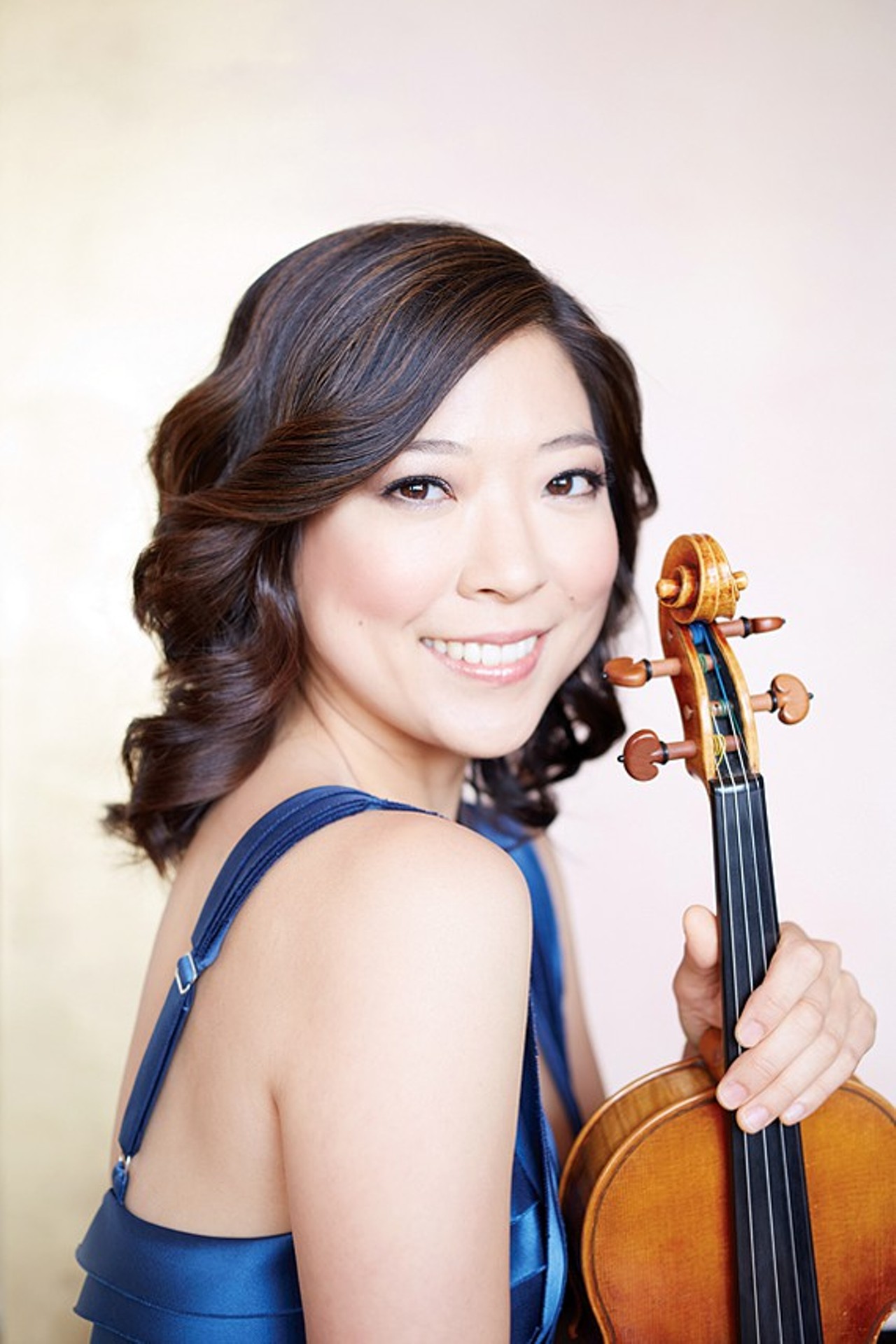
Violinist, Cleveland Orchestra; Member, Ensemble HD
Amy Lee was only 12 when she decided that the violin should be something more than a hobby in her life. "That's when I decided this is what I wanted to do; I totally fell in love. I wanted to become a violinist," says Lee, now the associate concertmaster of the Cleveland Orchestra. So she asked her parents if they'd move from Korea to the Philadelphia area so she could be around the music conservatories there. The very next year they made the move. In short time, Lee won a competition and soloed with the Philadelphia Orchestra – at the tender age of 15. At 16, she enrolled at the prestigious Curtis Institute of Music. After her bachelor's there, she got her master's degree at the Julliard School in Manhattan. "Right when I was finishing up my grad school, and started looking around for what positions were available, this was one of them," she said. "I came here totally not expecting to win such a great position out of school, but they were so nice and gave me a chance." Soon after arriving to Cleveland in 2008, she met her future husband, the orchestra's principal oboe player, Frank Rosenwein. They married in 2012. Together, they'd excel on stage and in front of packed crowds at Severance Hall and New York and across Europe, but they'd also take part in fun side projects, like the Ensemble HD, an idea born by principal flutist Josh Smith and the Happy Dog's Sean Watterson. The idea was simple: A small group from the orchestra would perform at the westside bar. "We thought, look, let's connect with these people who would otherwise never get to hear what we do, and let's show them that this is something they can enjoy as much as other genres of music," says Lee. "We went out there to the bar, put on a show, and it was so successful. People loved it. We were like rockstars playing Beethoven; it was so great." Lee and Rosenwein are also part of a Cleveland-based group called PAND (Performers and Artists for Nuclear Disarmament), putting on shows to raise awareness of the dangers of nuclear weapons. They are both professors too — Rosenwein at the Cleveland Institute of Music, Lee at Kent State. And Lee also performs with a group called the Omni Quartet with three other orchestra members, who also happen to be her best friends and bridesmaids. In seven years, there are many memories, but Lee's favorite moments so far in the Cleveland Orchestra happened during European tours. "One was Rusalka, the opera by Dvorak, that we did in Salzburg. Every concert was an out-of-body experience. It was so beautiful, so amazing, and I will never forget the experience. After that, doing Brahms' Deutsches Requiem in Vienna, that was just a very special experience. The orchestra just really came together in this beautiful hall where Brahms had performed it." From where Brahms performed his masterpiece to where you eat hot dogs and tater tots. No big deal.
By: Doug Brown
![The Teacher: Cassi PittmanProfessor, Case Western Reserve University
Earlier this year, Cassi Pittman took the stage at the East Cleveland Public Library to deliver a powerful analysis of the debate over annexation: Should the city in which she grew up agree to a merger with the city of Cleveland?
It's a question that's sparked debate for years. Now, both cities are inching toward more realistic conversations and petition-signing processes. There's a sense on both sides of the political boundary that this could happen. But, joining many others in her outlook, Pittman isn't sold. For one, she's a native East Clevelander. Born and raised, before heading east to the University of Pennsylvania and Harvard, and returning to her post now as a professor at Case Western Reserve University, she's rooted here. And she's not sure that handing over the reins of the city to another political body wracked with the same troubles is the best idea.
"Some of the things that are going on in East Cleveland — it's such a case study of so many different issues," she says, referencing the concentration of political power, the diminishing tax base, the decline of city services and more. She used her time during the keynote speech at the library to illuminate how East Cleveland's problems are mirrored almost perfectly by issues plaguing Cleveland's Glenville neighborhood.
Pittman started out at East Cleveland Public Schools. In fifth grade, she transferred to nearby Hathaway Brown, where she had a front-row seat to the social inequalities that drive politics and economics in this country.
"Some of my [East Cleveland] classmates, I just remember them being so brilliant," Pittman says. "We would have science fairs, and everyone would have these super creative projects. Then, when I left for HB, I felt like there was this assumption that because I came from East Cleveland I would be behind." Whereas students at Hathaway Brown were told that they could do anything they wanted as they grew up, her former classmates in East Cleveland were hit with the hard realities of bleak graduation rates and the too-often out-of-reach goals of college and careers.
Pittman, thankfully, has made of her life what she wanted. Now teaching in the sociology department at Case (teaching criminology and economic sociology), she is determined to study how best to improve the urban core of Northeast Ohio. She's hoping to teach an actual class on Cleveland and its socioeconomic past and present in the future.
For as diverse a region as it is, she says, the racial and class-based divides run deep. As we talked in the cafeteria at the Tinkham Veale Student Center, it was hard not to remember that physical and structural disrepair exist in almost every surrounding neighborhood — and while many leaders have spent time championing "regionalism" as political end. It's one disc in the backbone of rhetoric supporting a Cleveland-East Cleveland merger. "But I can't understand why we can't have the benefits of regionalism without necessarily losing our municipality," Pittman says.
Smart, confident and dedicated to her community, Pittman embodies the sort of New Resident around whom East Cleveland and most cities throughout Northeast Ohio need to structure themselves, no matter the outcome of the debate.
By: Eric Sandy](https://media1.clevescene.com/clevescene/imager/40-people-who-help-make-cleveland-the-best-damn-place-in-america/u/zoom/38250928/150707scenec2cassiep.jpg?cb=1648292486)
Professor, Case Western Reserve University
Earlier this year, Cassi Pittman took the stage at the East Cleveland Public Library to deliver a powerful analysis of the debate over annexation: Should the city in which she grew up agree to a merger with the city of Cleveland? It's a question that's sparked debate for years. Now, both cities are inching toward more realistic conversations and petition-signing processes. There's a sense on both sides of the political boundary that this could happen. But, joining many others in her outlook, Pittman isn't sold. For one, she's a native East Clevelander. Born and raised, before heading east to the University of Pennsylvania and Harvard, and returning to her post now as a professor at Case Western Reserve University, she's rooted here. And she's not sure that handing over the reins of the city to another political body wracked with the same troubles is the best idea. "Some of the things that are going on in East Cleveland — it's such a case study of so many different issues," she says, referencing the concentration of political power, the diminishing tax base, the decline of city services and more. She used her time during the keynote speech at the library to illuminate how East Cleveland's problems are mirrored almost perfectly by issues plaguing Cleveland's Glenville neighborhood. Pittman started out at East Cleveland Public Schools. In fifth grade, she transferred to nearby Hathaway Brown, where she had a front-row seat to the social inequalities that drive politics and economics in this country. "Some of my [East Cleveland] classmates, I just remember them being so brilliant," Pittman says. "We would have science fairs, and everyone would have these super creative projects. Then, when I left for HB, I felt like there was this assumption that because I came from East Cleveland I would be behind." Whereas students at Hathaway Brown were told that they could do anything they wanted as they grew up, her former classmates in East Cleveland were hit with the hard realities of bleak graduation rates and the too-often out-of-reach goals of college and careers. Pittman, thankfully, has made of her life what she wanted. Now teaching in the sociology department at Case (teaching criminology and economic sociology), she is determined to study how best to improve the urban core of Northeast Ohio. She's hoping to teach an actual class on Cleveland and its socioeconomic past and present in the future. For as diverse a region as it is, she says, the racial and class-based divides run deep. As we talked in the cafeteria at the Tinkham Veale Student Center, it was hard not to remember that physical and structural disrepair exist in almost every surrounding neighborhood — and while many leaders have spent time championing "regionalism" as political end. It's one disc in the backbone of rhetoric supporting a Cleveland-East Cleveland merger. "But I can't understand why we can't have the benefits of regionalism without necessarily losing our municipality," Pittman says. Smart, confident and dedicated to her community, Pittman embodies the sort of New Resident around whom East Cleveland and most cities throughout Northeast Ohio need to structure themselves, no matter the outcome of the debate.
By: Eric Sandy
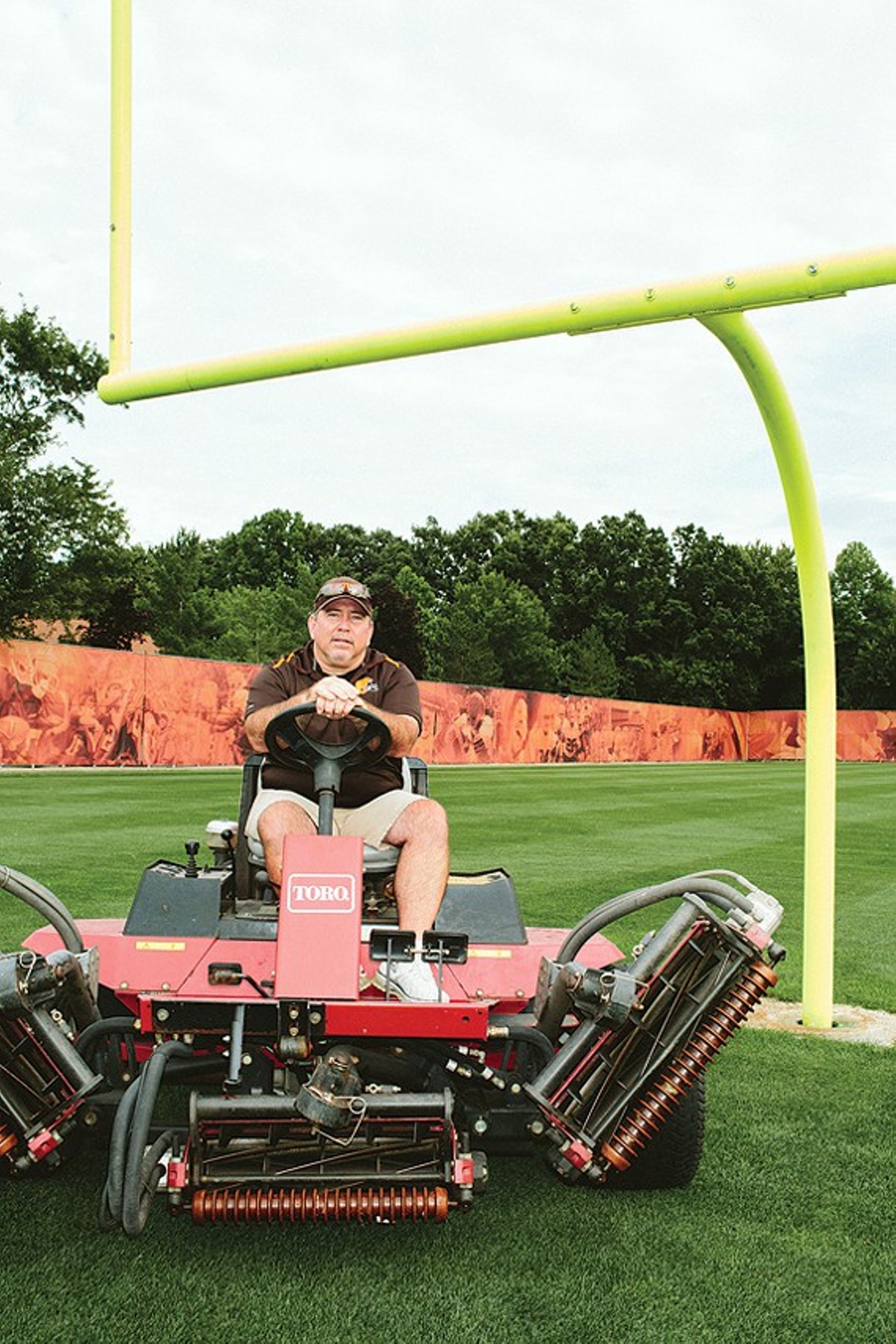
Head Groundskeeper, Cleveland Browns
There's a saying amongst groundskeepers to this effect: If nobody is saying anything, everything is great. Hundreds of thousands of people tune into Browns' games each fall and winter, and while they watch whatever quarterback has been left holding the hot potato at the time, they are also watching Chris Powell's handiwork. But they're not talking about it. Powell, 47, is the head groundskeeper for the Cleveland Browns and has been since 1999. That means he's the man in charge of the turf down at the stadium as well as all the turf at the team's practice facilities in Berea. "At both locations, I basically designed the fields myself," he says. "At first, they didn't let me design the field for the stadium — there was also a time crunch — up to my specs. Basically, for the NFL, you take the United States Golf Association's specifications for golf greens and that's what you work with. It's pretty much sand, with a little peat. I also added 10 percent clay to the mix to help with stability at the practice facility. We didn't do that at the stadium and there were issues from the first game. There was no stability. It's thin-cut sod, and it was late June, and it was a very hot summer in 1999. We had some issues with rooting and had to resod and redo it for the next season." Since then, however, you haven't heard so much as a peep about the playing field not being up to par. And Powell says they haven't had to do a full resod of the complete surface in seven years, though the middle of the field, prone to the most wear and tear from 300-pound bodies, does get fresh turf throughout the year. What does it all entail? Traveling with the team and making sure any surface they set foot on has the right hardness standards, checking the weather more than a meteorologist, organizing plans for any special events that'll be hosted at the stadium and thus affect his precious sod, and dealing with fickle kickers. "Phil Dawson's a great guy," says Powell of the departed Browns kicker. "I don't want to say we had a love-hate relationship, but ... . He had very good success in Cleveland. We had lots of conversations through the years. He'd want to know how much sand was at the top of the soil, how that changed what cleats he might wear, he'd ask about the top dressing of the field — he was very in tune to everything we did." Back when he got out of high school, Powell's dad told him to get a job for the summer. So he got the best job he could find: working at a golf course. He saved up, went to the National Guard, went to Central Missouri State and got to work on athletic fields and golf courses and network. Which is how he got hooked up with the Browns' groundskeeper back in 1992. He was in Cleveland for a year before heading to Kansas City to work with groundskeeper guru George Toma, a legend in his line of work who has been the groundskeeper or assisted with groundskeeping at every single Super Bowl since the first one in 1967. "I learned the high intellectual end of groundskeeping from some of the people I've worked with and the old-school stuff from George Toma," Powell says. "I like to think I've come to a sort of balance."
By: Vince Grzegorek
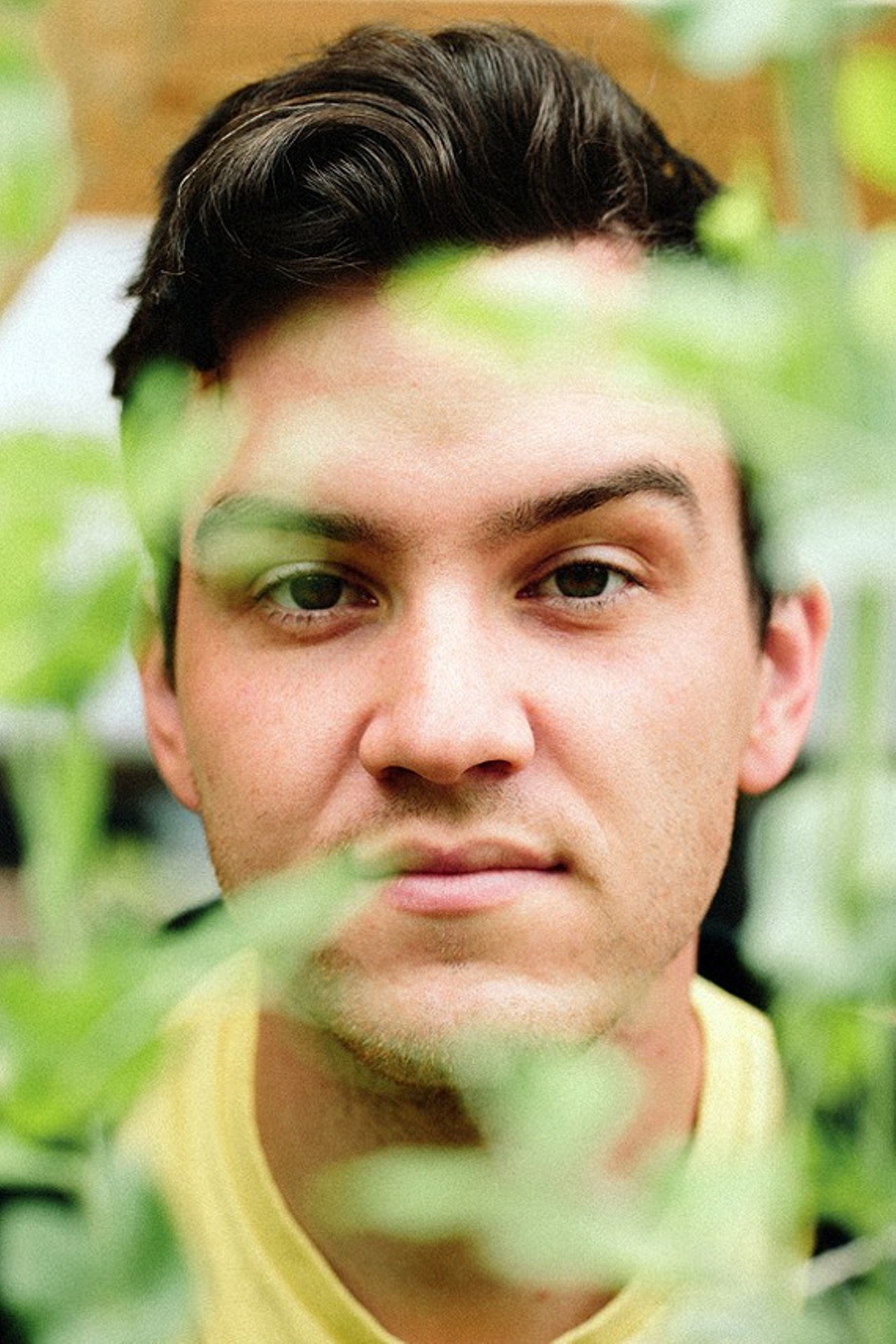
Co-Founder, Rust Belt Riders
Dan Brown and his future business partner Michael Robinson were trying to run a garden on East 40th and St. Clair. They had one big problem: The soil was no good. They had to truck the stuff in to make do. "We realized we were more farmers of soil than farmers of food and basically got really into composting," he says. And that's when they realized they could perhaps make a little bit of money while doing some good for the community. "We were working at restaurants at the time and saw how much food was going out the back door, and realized we could capture some of that and just bring it to our garden to mix into our compost bins and pump out healthy soil," he says. "Extrapolating from our own situation, there are like 200 community gardens in Cleveland, all on really shitty, highly compacted soil, and all of them would benefit from having access to free compost." And that's how Rust Belt Riders would start, funded with just $2,000, on June 1 of last year when their presentation at SOUP Cleveland, a sort of informal business incubator, was selected as the winner and recipient of that month's kitty. "The idea was to basically make composting easy, make it free at the gardens, and assign a value to the waste that comes out of restaurants." They'd charge restaurants and homes a flat fee to pick up compostable waste — solely on bikes, at first (thus, the name "Rust Belt Riders") — and then deliver it to nearby community gardens for free. Brown, a 2007 St. Ignatius grad, met Robinson, an Illinois native, during college in Chicago. Brown studied ethics at Depaul; Robinson studied history and philosophy at Loyola. "We're not business gurus by any stretch of the imagination," says Brown. But with a year of trial and error under their belt, they're beginning to understand how to make a sustainable business. They've since moved away from residential pickups ("We needed a tremendous amount of density to make that pricing model work") and now charge by the pound. They've also started using cars more — ever since the restaurant compost hauls grew to more than the 250 pounds that the bikes could handle. The 400 pounds of waste they pick up twice per week from Beet juicebar, for example, just isn't feasible to move via bike, he explained. Things have gone well enough that Brown recently made the "terrifying" move to leave his internship and restaurant gig to give this a go full time. "When we started we had like three or four clients and had no idea what we were doing; we just threw out random prices," he says. They started just bringing compost to their near-eastside garden. Now they work with 20 businesses and bring compost to 15 gardens around Cleveland, hauling an estimated 80,000 pounds in the first year.
By: Doug Brown
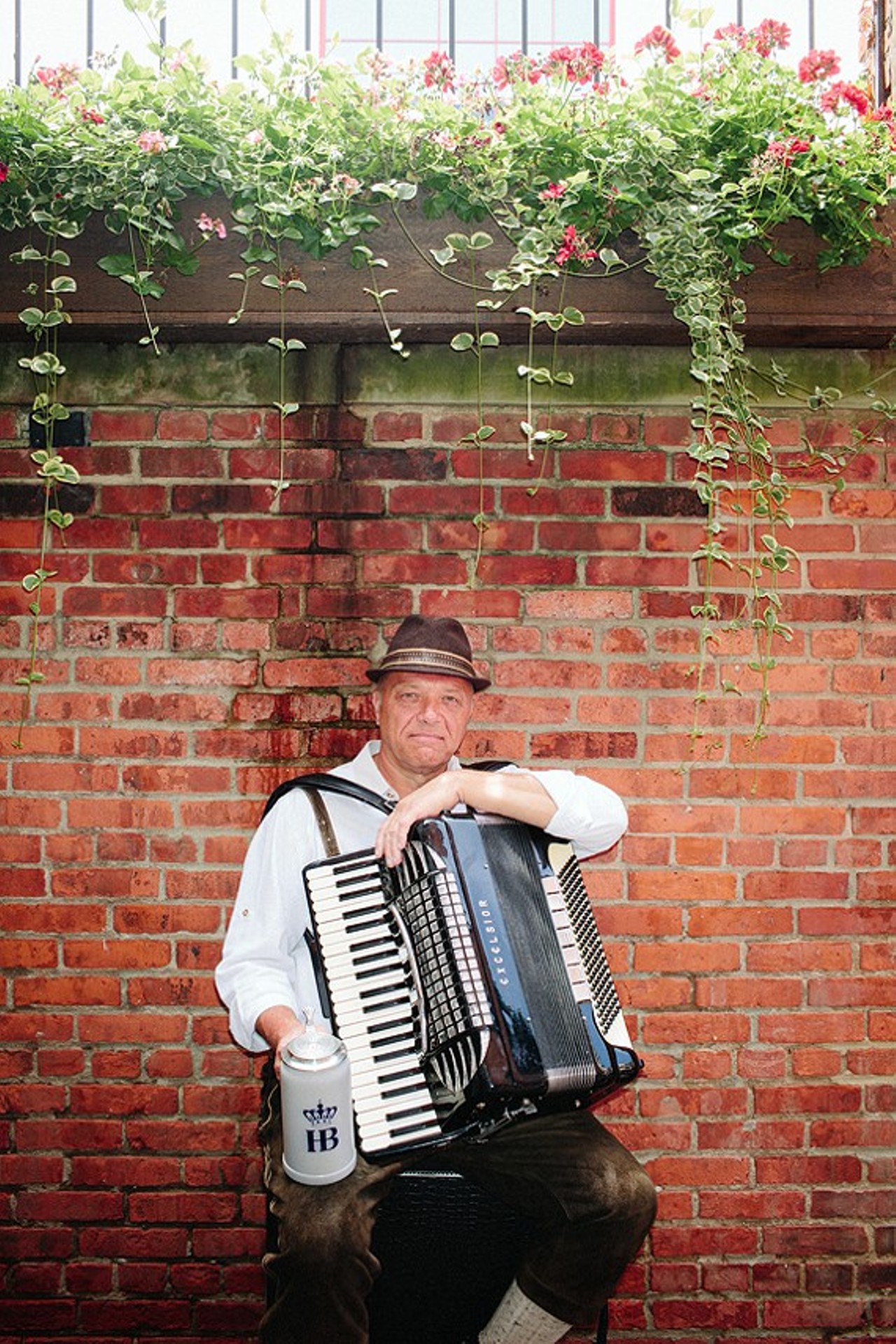
Lead Singer, Schnickelfritz
Wojtila, who's a "very young 60," as he likes to point out, had been playing polka for decades. His dad had moved to the U.S. from Czechoslovakia and settled the family in a little pocket of Slovenians off Buckeye Road before moving to Euclid. His mother was an accomplished pianist and teacher, and music was always around. So, naturally, he picked up instruments and learned how to play Slovenian polka. He made recordings and did TV appearances and played weddings, but it was a side gig, a lovely hobby that filled the time when he wasn't raising his family or running his bakery in Euclid. "We played variety and Slovenian and we learned all aspects of music, not just polka," he says. "We learned pop for the weddings that we played back in the day." He'd still be playing with his brothers and assorted musicians at weddings for the most part, catering to a fervent but older crowd, if not for the arrival of the Hofbräuhaus in Cleveland. "They scouted us and basically that's how we ended up there," says Wojtila. "So we just carried through what we did there. We're a mainstay now." Schnickelfritz is the de facto house band at the giant beer hall and garden, taking the stage during peak times: weekends, from 9:30 p.m. to 1 a.m. or so. When you enter the giant hall, for those who haven't yet been, you walk into a packed room filled with hundreds of people standing on benches and bellowing the words to songs at the top of their lungs, clinking their steins and dancing. And Wojtila is the center of it all, singing and playing accordion, dotting the atmosphere with polka standards like "Roll Out the Barrel," "Who Stole the Kishka" and "Too Fat Polka." But alongside those standards come polka variations on "Hang on Sloopy," Bon Jovi songs, even Meghan Trainor's "All About That Bass." It's Oktoberfest and a wedding and a dance party all rolled up into one, every single night. "It rejuvenated our career because it's not just old-people polka," he says. "We kind of fuse polka with rock and pop. It's a very, very unique situation. It's very fun, something like I've never seen before. As soon as you walk into the place, you're accepted, it's a warm feeling, and everyone is just happy and smiling and dancing. So we have to think very carefully about what we play." The six-member group holds court amidst the pretzels and sausages and shotskis (basically, shot glasses attached to a ski, filled with your choice of liquor, and downed simultaneously by whomever you happen to be sharing it with). German beer halls and gardens are enjoying a bit of a renaissance, and so too are the people who play traditional Eastern European music. A couple have opened in Cleveland, and another — Hansa brewery in Ohio City — is slated to join the crowd. Which means more polka than Cleveland's enjoyed in awhile, and that's just fine with Wojtila. It's music for the people, and he's happy to lead the party. "There was a woman last week who was celebrating her 95th birthday," he says. "And I introduced her and she stood up and waved and the whole crowd applauded and wouldn't stop. It went on and on. It was amazing. That's what this is all about. It's a people place."
By: Vince Grzegorek
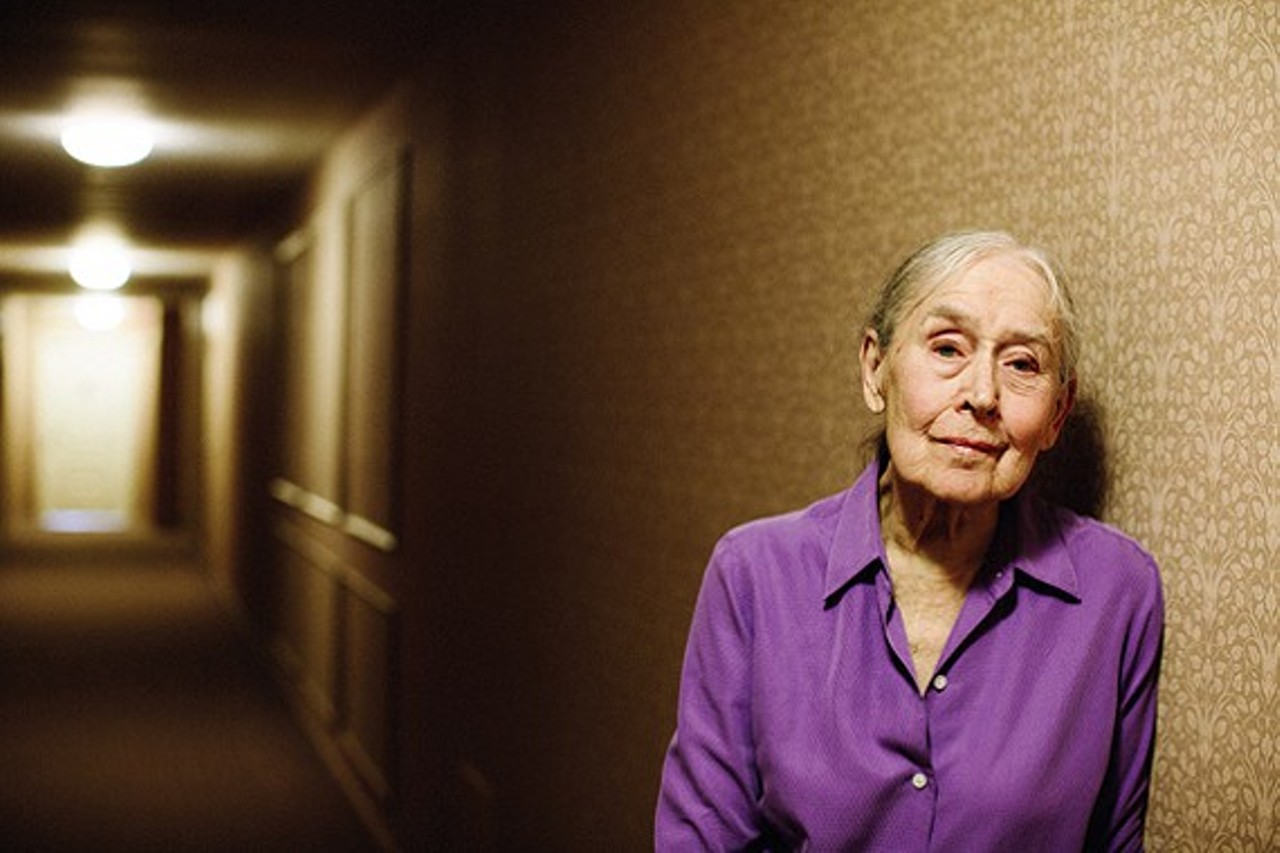
Actress
"I've been letting myself grow old for years," Dorothy Silver says. "I'm very confident in my age. Also, it helps me be competitive in getting many stage and film roles, since so many older actresses try to take years off their age." Silver, the grande dame of Cleveland theater at 86, is nothing if not confident. From her movie roles in The Shawshank Redemption and Promised Land to her local stage appearances over many decades, Silver has defined the essence of talent and grace. Of course, Silver was often paired in many people's minds with her husband of 65 years, Reuben, who passed away last year. They were "ReubenandDorothy" long before other celebrities began using playful uni-names for their bonded status. As Dorothy says, "We grew together over all those years. He was so supportive of my work, as I was his. I'm very grateful for the time we had together." They were both pillars at the Karamu House and at Cleveland State University, directing and acting in countless productions there and elsewhere. "My first love is theater," says Silver, "because that's where you actually act. If you act on film, you're in trouble. Everything has to be done in miniature." Her favorite stage role is Claire Zachanassian in The Visit by Friedrich Durrenmatt, a part she created at CSU in 1991 (it was helmed by another Cleveland theater icon, director Joe Garry). And she also enjoyed playing opera diva Maria Callas in Master Class at the Beck Center for the Arts in Lakewood. Even though Reuben isn't here in the flesh, he's still with her. "I feel strongly that he's around me. He's often leaving the room or calling me. And I have discussions with him. Of course I know how he thinks, after all those years, so the discussions are really quite productive." Even now, Dorothy is continuing to work on stage and in film. She will be playing Goody Nurse in The Crucible during the Cleveland Play House's 100th anniversary season, in October of this year. And she is slated to star in The Revisionist at Dobama Theatre next April. As Dorothy notes, "I'm glad I'm still here, and so glad this is such an extraordinary city. It's essentially a blue-collar town where top-flight arts institutions such as the Cleveland Orchestra, the Cleveland Museum of Art, Karamu House and the Cleveland Play House have endured and thrived for 100 years, or close to it. I think that's remarkable!"
By: Christine Howey
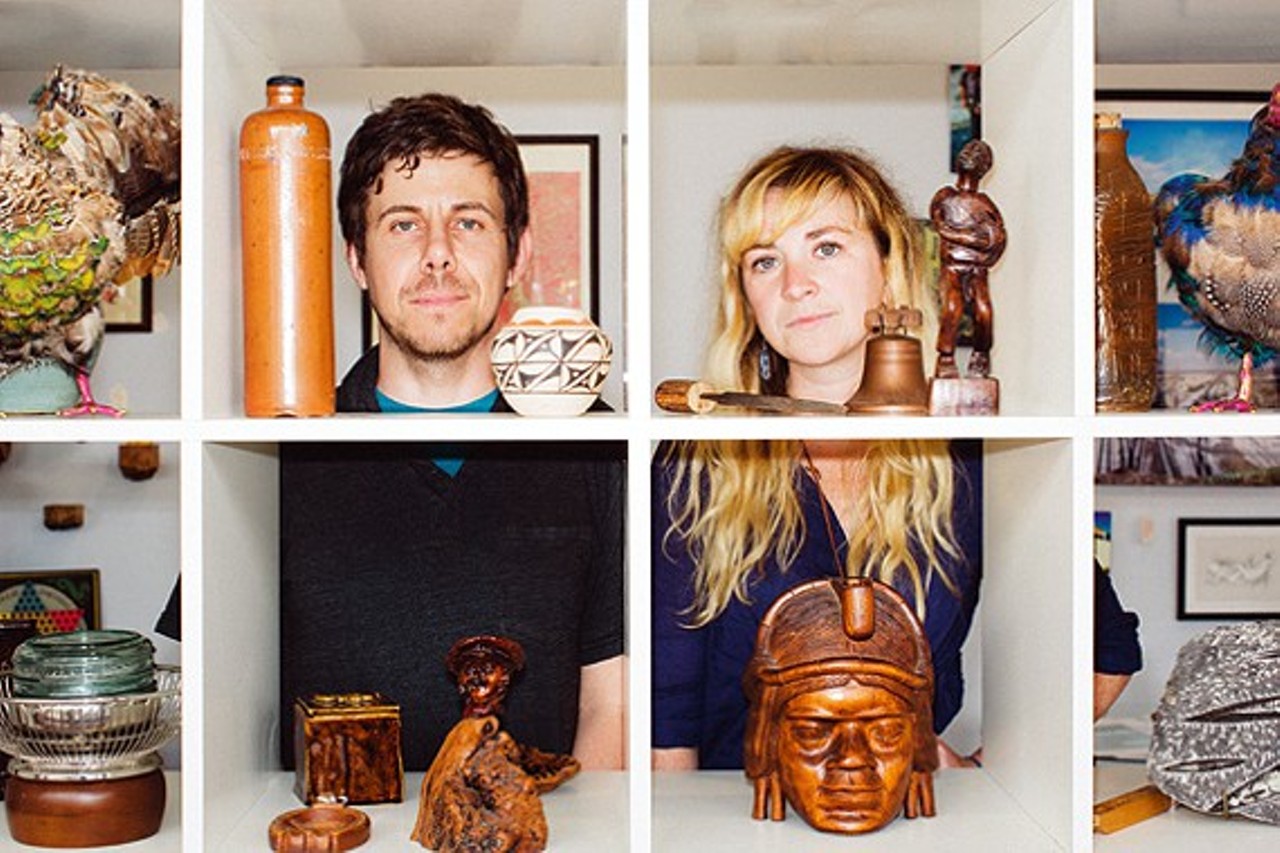
Co-Founders, Canopy Collective
Founded this spring in Ohio City's Lorain Avenue antiques district, Canopy Collective is an antique and regional art consignment boutique, gallery, artist studios, classroom, screening room and more. As co-founders Erika Durham and Anthony Koch explain, the space is really whatever you wish it to be. "I think what makes us different is most easily understood by being in the space," explains Durham. "There are many great shops in Cleveland where you can buy handmade art, crafts, vintage items and antiques, but what sets us apart is our ability to morph the space into just about anything. We are so excited to continue to meet new artists and creative minds and grow this fantastic community of people. One of the nicest compliments we receive is that our space feels very comfortable and 'like home,' which is what we were aiming for all along." Canopy, which populated the old Buck Buck gallery space, hosts an eclectic variety of classes including painting, tango, movement exploration, yoga, digital photography, three-dimensional design and children's art classes. So it's sort of a shop and sort of a gallery and sort of a studio for just about anything the duo are into. It also hosts the PenPal Social Club every other week in collaboration with online publication The Red Heart Press. "We are both from Cleveland, and our families are here," says Durham. "We also have been part of the growing arts scene in a variety of ways and were so excited to see how much support the people who live here are willing to give to artists and artisans. It seemed like the right time to jump into a big creative project." They have nine studio artists that run the gamut from writers to muralists to photographers to wood workers. That end result stemmed from a vision for the Collective that the two had in the initial planning phases. "We started working with eight other people last year with an idea to start a non-profit focused on music and art, with community events and classes," recalls Durham. "After looking at a few spaces for that specific project, we started to realize that it was going to be incredibly difficult to meld the worlds of 'practice space' and 'fine arts space' because of noise and scheduling issues. Once we came to the conclusion that it wasn't a feasible project, we branched off with two friends (Adam Jaenke and Lisa Paulovcin) from the group and changed gears to a for-profit business focused on the art aspect. The idea morphed over time and came to be what it is now." Moving forward, Durham and Koch have a full schedule planned through May 2016. In the coming months, Canopy will host a number of special events featuring many emerging local artists.
By: Josh Usami
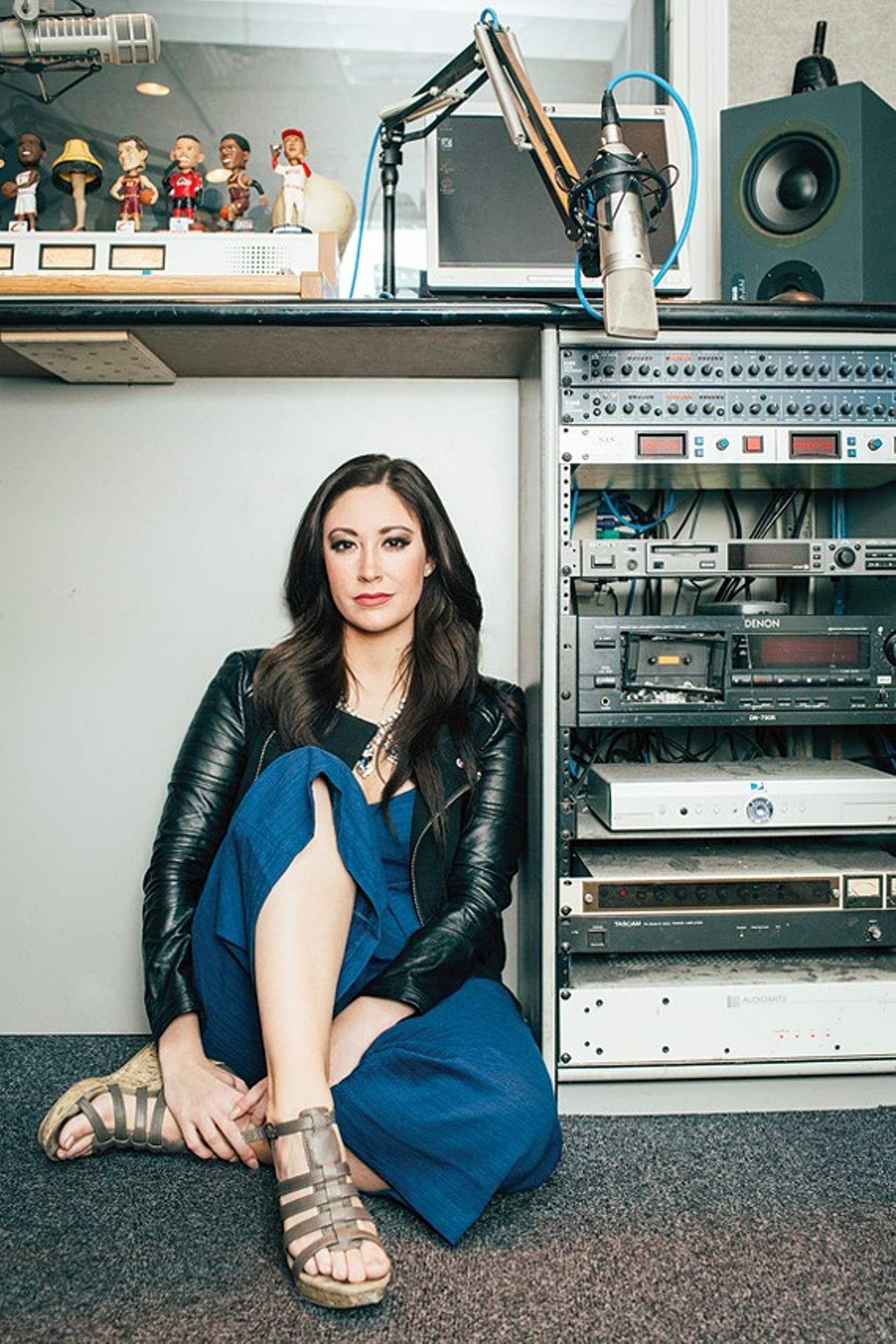
Co-Host, Alan Cox Show
Now a mainstay on Cleveland radio — from 3 to 7 p.m. on 100.7 FM WMMS' Alan Cox Show — Erika Lauren has taken a circuitous route to land in her buzzworthy role. Springboarding from her stint on The Real World, she's been developing a career in radio and music. And with the North Shore as her backdrop, her creativity seems to expand with each passing year. Lauren was led to Cleveland more than six years ago, moving here for love with little in the way of job prospects. She reached out to a few radio stations, soliciting interviews about her time on MTV's The Real World. A former producer at WMMS ended up offering her a part-time job with the Alan Cox Show, running admin work and screening calls. Six months in, they left her mic on and encouraged her to contribute to the show. "It was kismet," she says. "I had studied radio in college and interned at a radio station. I always thought I would be on the promotions side or working behind the scenes, but I grew up listening to talk radio." Often, she says, she'd pick up tardy slips in high school after gluing her ears to DreX in the Morning out in the parking lot. "I've always been drawn to that, but I never thought that I could or should or would do it," Lauren says. "I always tell people I just fell ass-backwards into it." Well into her tenure on the show, she's long been a natural fit alongside Cox's biting wit and co-host Bill Squire's everyman sarcasm and wordplay. It's been an adventurous ride where each day brings something different — like a recent lost bet that had her drinking Malort on-air (think "gasoline and wood shavings," Lauren says, flavor-wise) while Cox tried and failed to eat an entire stick of butter. In short, her work in radio affords her a nice blend of fun and those endless horizons of learning. "I still have so far to go, but I feel like I'm at the point where things are starting to make sense and I'm starting to get the hang of it," she says. "As a co-host, you're there to support. You're there to follow the vision of the host of the show. It's just following Alan's lead and chiming in when the timing is right. Timing is everything in radio." Elsewhere in Cleveland, and per her own vision, Lauren fronts Hawkeye, a local "rocktronica" outfit that blends an EDM base with high-energy dance structures. The band came together amid hazy conversations about how best to fuse these exciting strains of rock music. The crowds have been growing at their shows over the past few years, and it's those crowds — the audiences at her concerts, the audiences tuning in each afternoon — that sustain her talents. "What I've learned is that the people make the city, and Cleveland has the best people," Lauren says. "The way I explain it is: If you walk down the street in Chicago and you ask for directions, nine times out of 10 that person will either a) pretend like they don't speak English or b) have their earbuds in. In Cleveland, not only will they stop and give you directions — if they don't know the directions, they'll call a friend, they'll look it up on their phone. There's a camaraderie here. Everyone is out to support one another."
By: Eric Sandy



